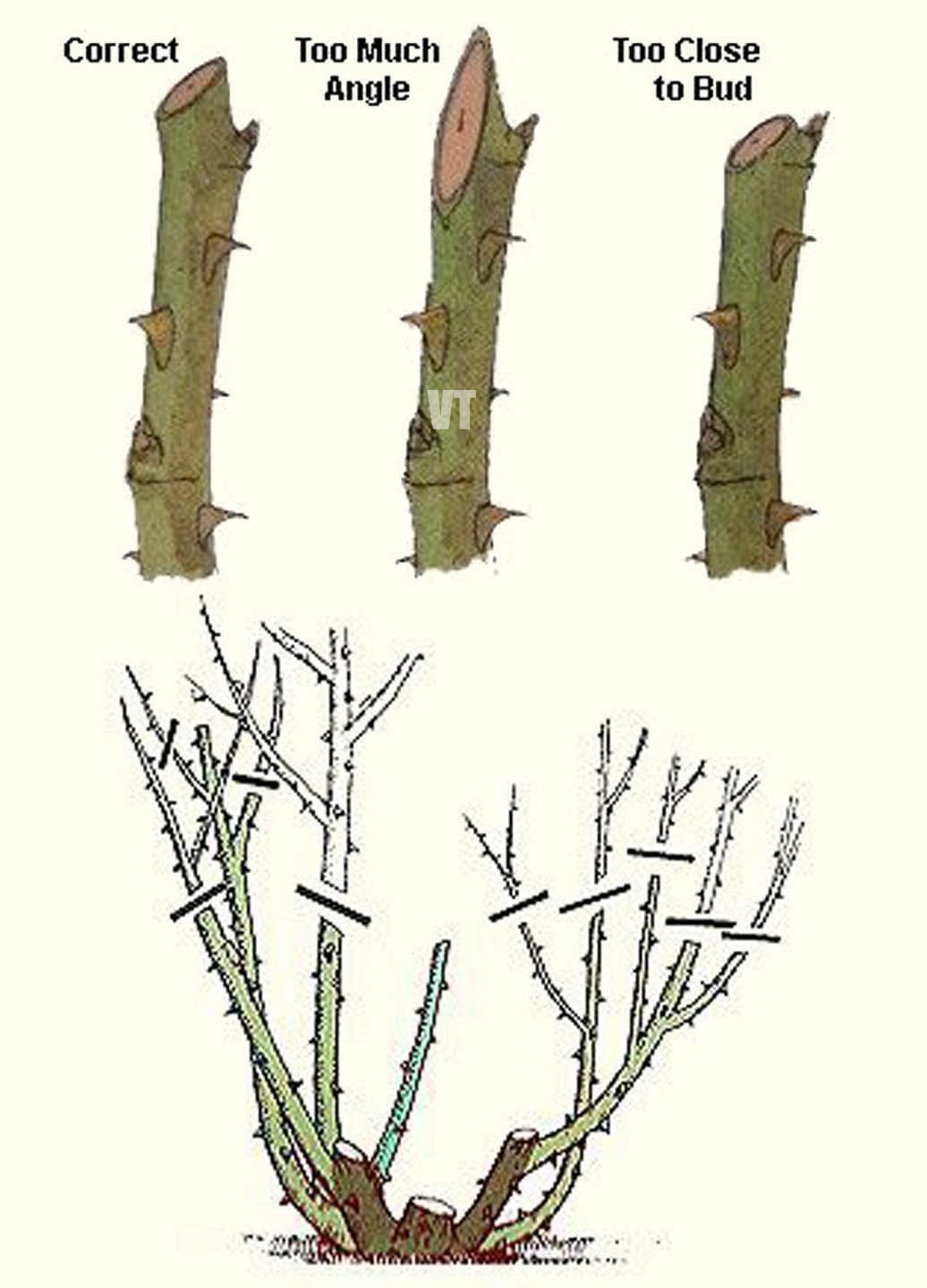When to Prune Roses
Late Winter or Early Spring: The best time for pruning most roses is before they exit dormancy, which is often marked by the buds starting to swell.
Climbing Roses: These should be pruned right after their blooming period as they usually flower on the previous year’s wood.
How to Prune Roses

- Remove Remaining Leaves: Clearing leaves helps in inspecting the bush’s structure and identifying any hidden pests or diseases.
Start with Dead Wood: Cut off any dead wood back to where there is healthy tissue.
Open Up the Center: Prune crossing branches to prevent damage and disease, aiming for a vase-like shape.
Remove Thin Growth: Eliminate growth thinner than a pencil for stronger development.
Prune Remaining Canes: Cut just above an outward-facing bud at a 45-degree angle to encourage outward growth.
Seal Fresh Cuts: Use a pruning sealer to protect cuts from pests and diseases.
Fertilize: Nourish your roses post-pruning with appropriate fertilizers for healthy growth.
Additional Tips
Use Sharp Tools: Ensure your pruning tools are sharp and clean for precise cuts.
Regular Inspection: Regularly inspect your roses for signs of pests or diseases, and prune as necessary.
Variety-Specific Care: Understand the specific pruning needs of your rose variety, as different types require different approaches.
Pruning is vital for the health and vibrancy of rose bushes. This general guide provides an overview of the key steps and considerations, but it’s important to adapt these to the specifics of your rose varieties and local climate conditions.
Inspired by this? Share the article with your friends!
News
Ranbir got angry! What did Ranbir Kapoor say on the news of Aishwarya Rai and Abhishek Bachchan’s divorce?
The recent news of Aishwarya Rai and Abhishek Bachchan’s divorce has sent shockwaves through Bollywood, prompting reactions from various celebrities, including actor Ranbir Kapoor. Known for his versatility and charm, Ranbir has always been a keen observer of the industry…
Lawrence Bishnoi is after Shahrukh? After Salman Khan, new Shahrukh Khan gets threat?
In a shocking turn of events that has captured the attention of the Indian media, reports have emerged suggesting that Lawrence Bishnoi, a notorious gangster, is allegedly targeting Bollywood superstar Shah Rukh Khan. This news comes in the wake of…
Bigg Boss 18: Arfeen Khan, not Sara, was evicted from Bigg Boss, was Vivian Dsena the reason?
In a surprising turn of events on the latest season of Bigg Boss 18, it was Arfeen Khan, not Sara Khan, who faced eviction, leaving fans and contestants alike in shock. The reality show, known for its dramatic twists and…
The truth about Aishwarya Rai’s broken relationship came out, was Vivek Oberoi the reason?
In the glamorous world of Bollywood, relationships often become the subject of intense scrutiny and speculation, particularly when they involve high-profile figures like Aishwarya Rai and Vivek Oberoi. Aishwarya Rai, a former Miss World and one of the most celebrated…
After 30 years, this Bollywood actress made serious allegations against Salman Khan
In a shocking turn of events, a veteran Bollywood actress has stepped forward after nearly three decades to make serious allegations against superstar Salman Khan. This revelation has sent ripples through the film industry and among fans, reigniting discussions about…
Kareena Kapoor’s shocking Reaction on Aishwarya Rai and Abhisekh Bachchan’s secret after Divorce
Kareena Kapoor Khan, a leading figure in Bollywood and a prominent actress known for her candid personality, recently made headlines with her unexpected reaction to the revelation concerning Aishwarya Rai and Abhishek Bachchan’s secret dealings after their divorce. The dynamics…
End of content
No more pages to load











